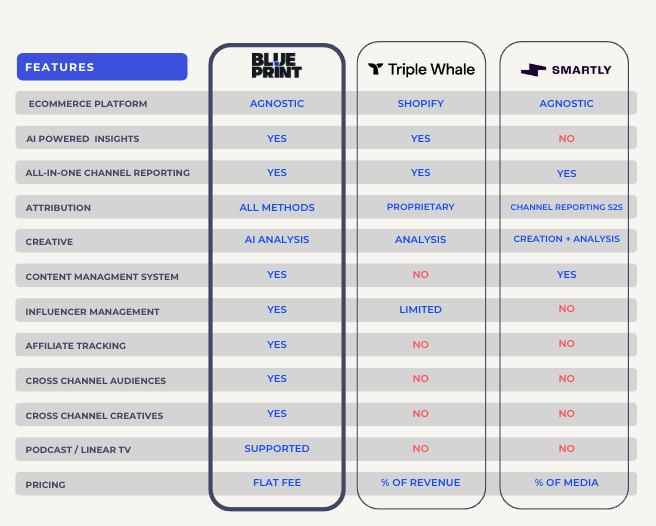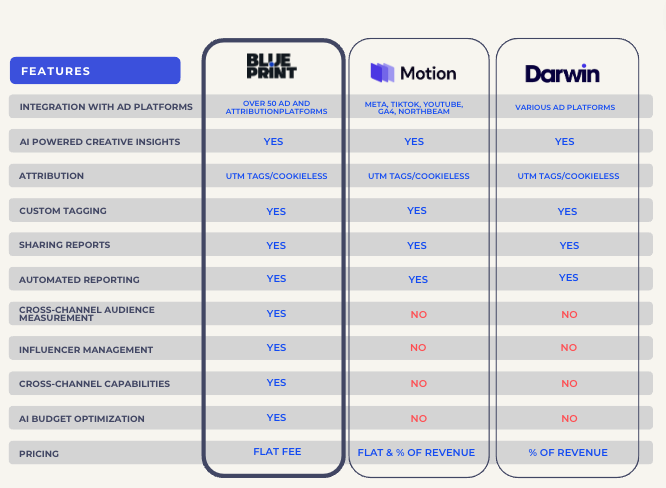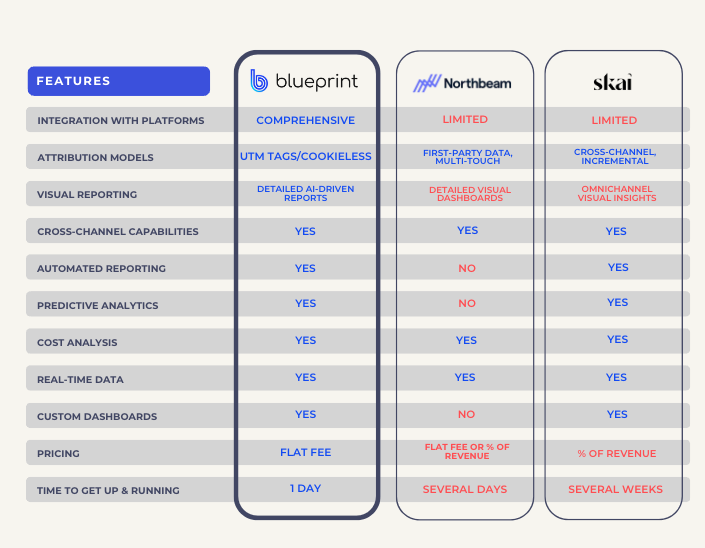1 min read
Comparing Blueprint.tech, Triple Whale, & Smartly.IO - 2024's Best Ecommerce Data Platforms for Big Ad Spenders
If you're spending 6 figures or even millions of dollars per month on ads, then you are no doubt faced with pressing questions like, "Where do I...




